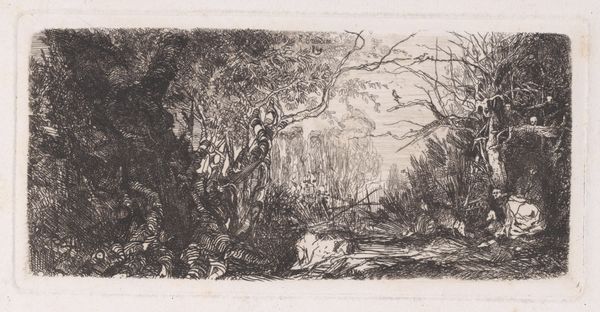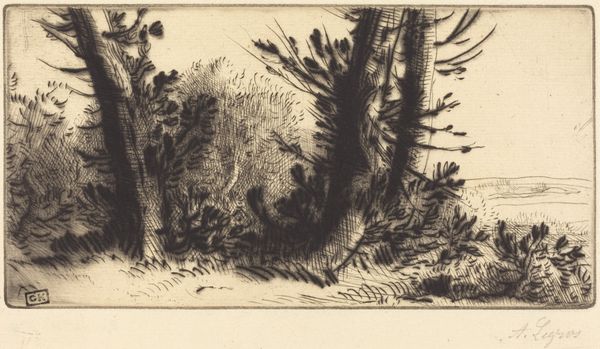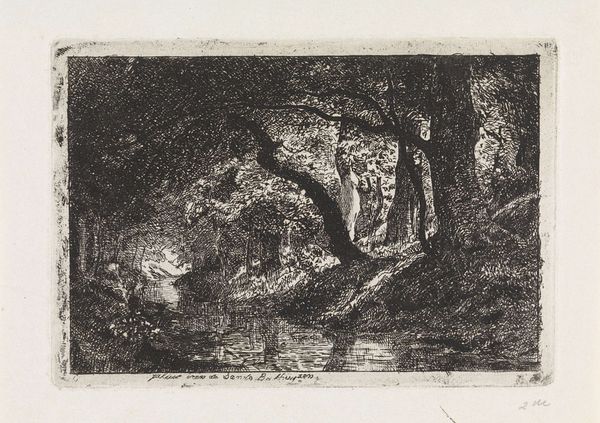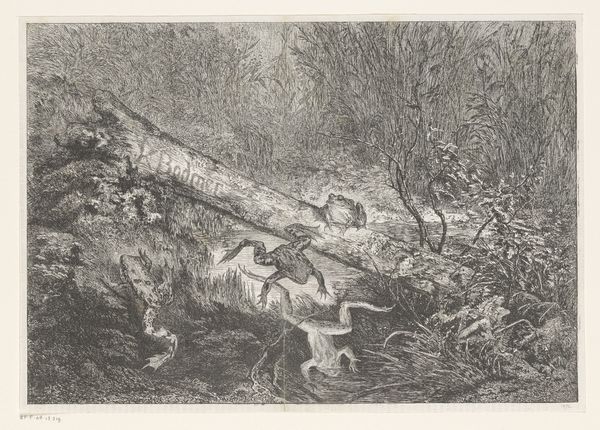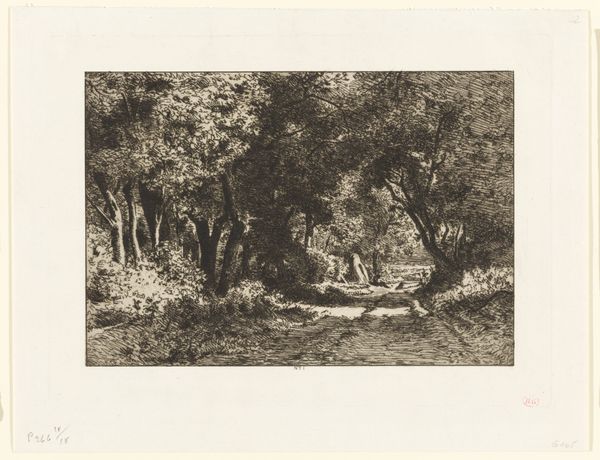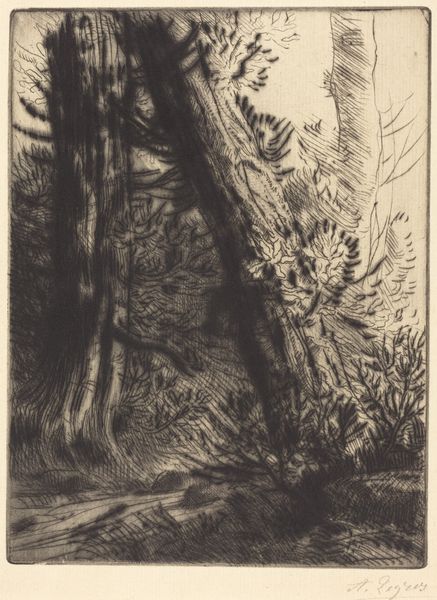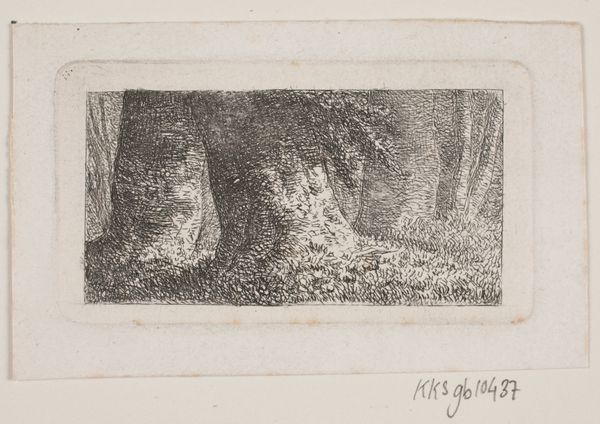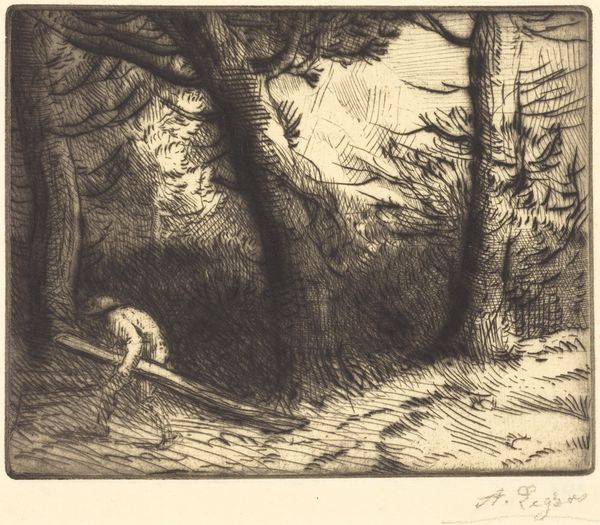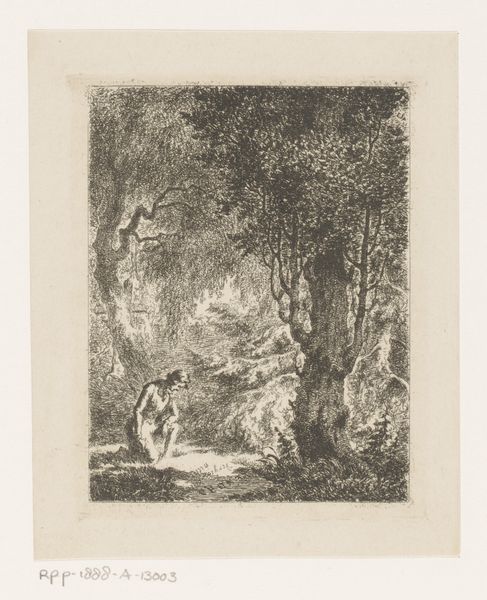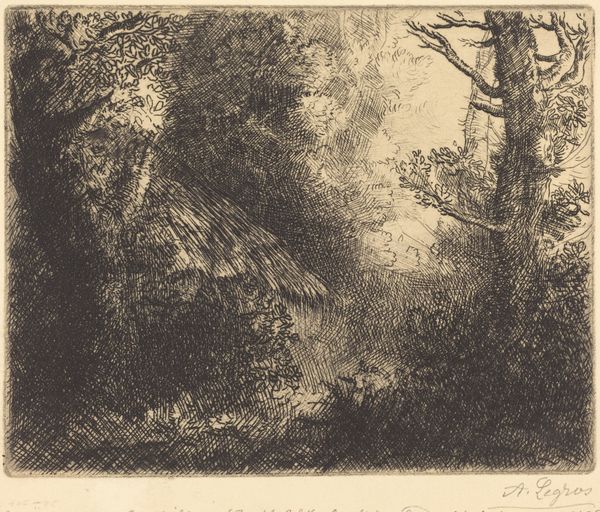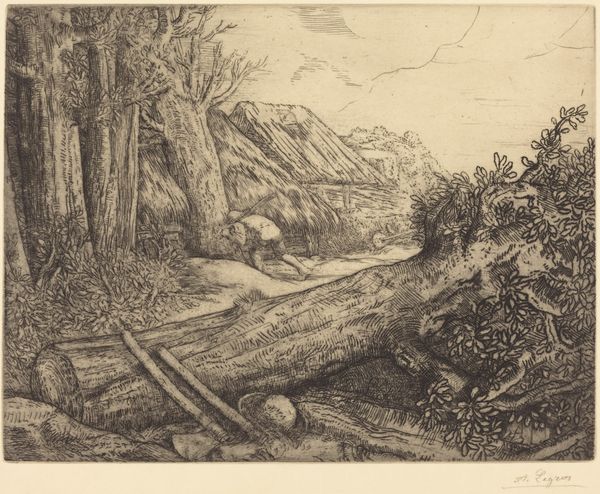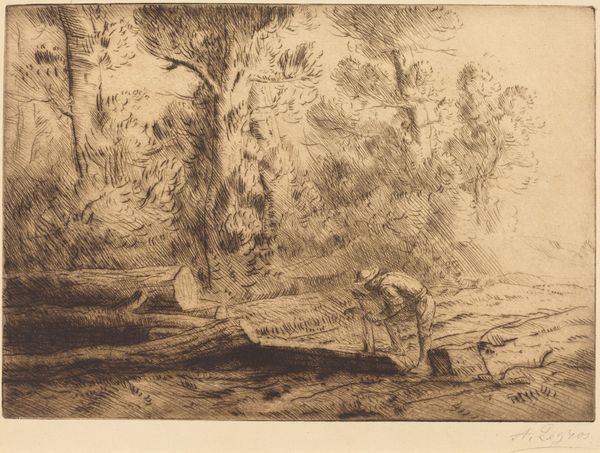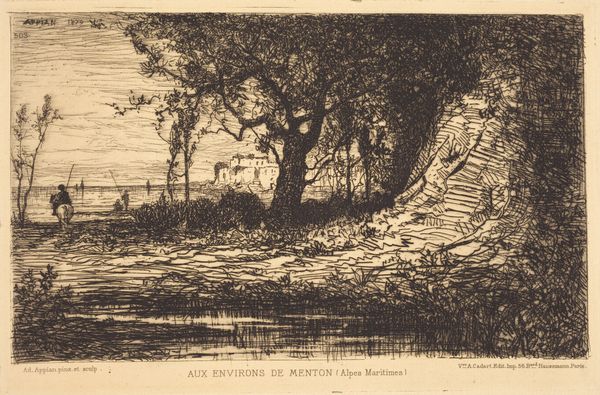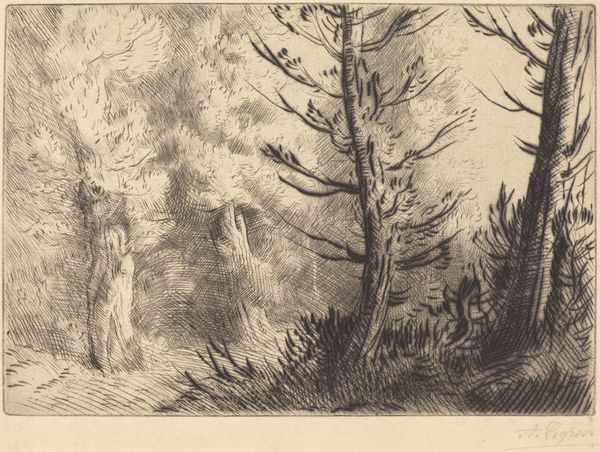
print, etching
# print
#
etching
#
landscape
#
realism
Dimensions: height 73 mm, width 96 mm
Copyright: Rijks Museum: Open Domain
Curator: Ah, a pastoral scene rendered with such intimate detail! This is "Landschap met koe en waterloop," or "Landscape with Cow and Stream," an etching crafted in 1843 by Charles Jacque. Editor: My first impression is that it’s incredibly busy. There's a lot happening within a very confined space, a kind of tension between bucolic calm and almost frantic energy. Curator: It's fascinating how Jacque employs etching to capture that very dynamism, isn't it? The rapid, almost nervous lines used to create texture. Observe the animal figures. I think those livestock scenes reflect our deep-seated association of cattle with prosperity and safety. Do you see any kind of symbolic program at play in these elements? Editor: I’m not sure I'd call it a program, but certainly associations. Landscape in art during this period was very much tied to ideas of nationhood and ownership. The cow, a symbol of agrarian life, speaks to that deeply. And let’s not forget that access to clean water—represented here by the stream—is, and was, a fundamental political issue linked to land rights and the common good. Who owns this land? Who has access? The seemingly peaceful scene subtly raises such questions. Curator: An important context. In considering the time it was created, realism itself was becoming a more politicized style, too. This artwork becomes a record of the life it portrays. The ordinary experiences of animals, people and landscapes take on importance beyond the aesthetic value in the picture. Editor: And perhaps what Jacque chooses to exclude is equally important. Where are the farmers who likely tend that cow? How do class and labor operate within this landscape? Maybe this river divides more than land; it also reflects socioeconomic divides within 19th century agricultural communities. Curator: A lens for examining the historical dimensions of this work in addition to Jacque’s mark making and chosen subject matter. Thank you for offering this layered perspective, particularly focusing on the historical context. Editor: The symbolism, I believe, lies in how the familiar, idealized landscape also masks deeper socio-political currents of that time. Food production, who produces it, for whom, and under what condition are certainly represented through those symbols you pointed out at the beginning.
Comments
No comments
Be the first to comment and join the conversation on the ultimate creative platform.
